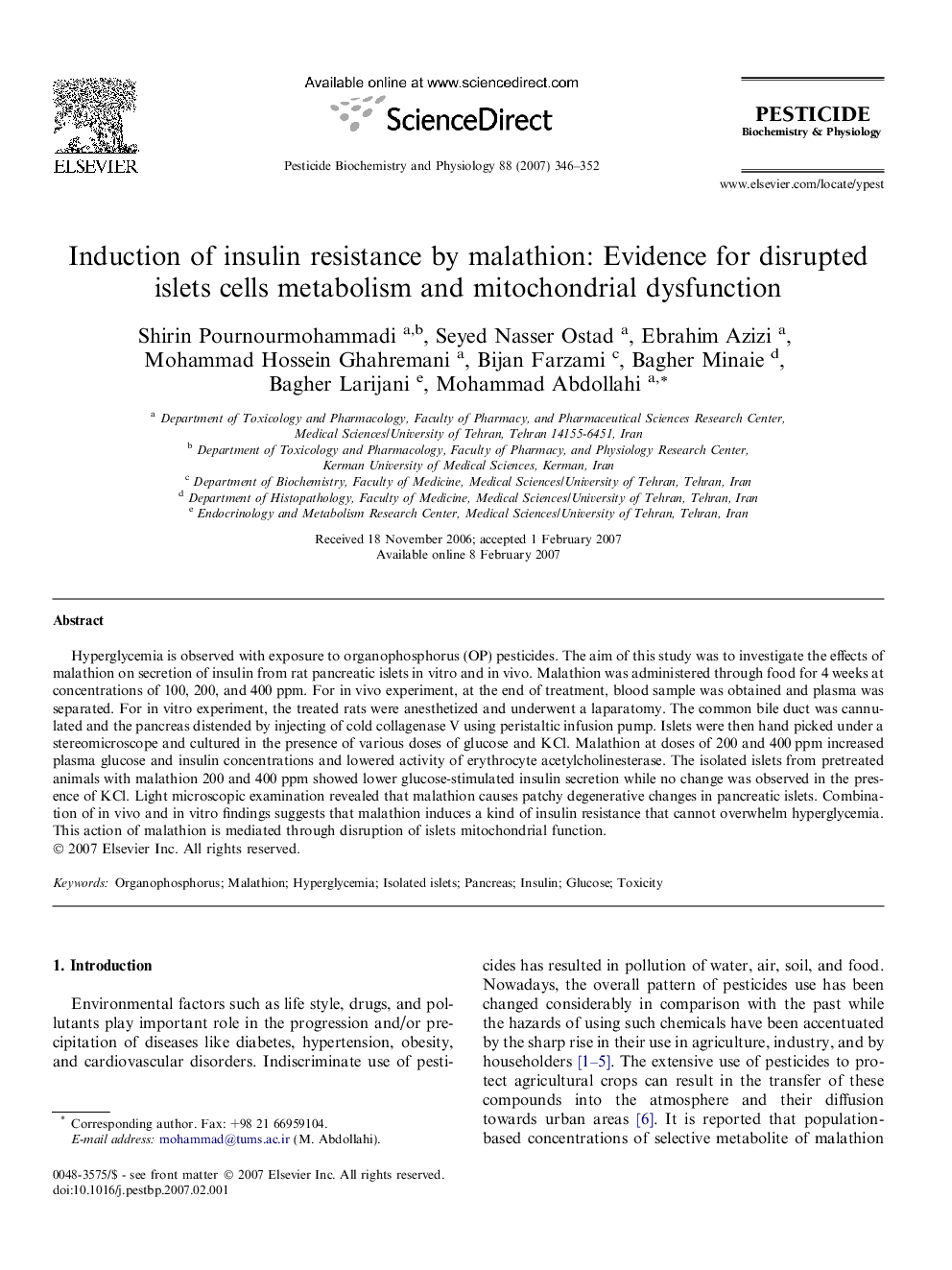| Article ID | Journal | Published Year | Pages | File Type |
|---|---|---|---|---|
| 2009850 | Pesticide Biochemistry and Physiology | 2007 | 7 Pages |
Hyperglycemia is observed with exposure to organophosphorus (OP) pesticides. The aim of this study was to investigate the effects of malathion on secretion of insulin from rat pancreatic islets in vitro and in vivo. Malathion was administered through food for 4 weeks at concentrations of 100, 200, and 400 ppm. For in vivo experiment, at the end of treatment, blood sample was obtained and plasma was separated. For in vitro experiment, the treated rats were anesthetized and underwent a laparatomy. The common bile duct was cannulated and the pancreas distended by injecting of cold collagenase V using peristaltic infusion pump. Islets were then hand picked under a stereomicroscope and cultured in the presence of various doses of glucose and KCl. Malathion at doses of 200 and 400 ppm increased plasma glucose and insulin concentrations and lowered activity of erythrocyte acetylcholinesterase. The isolated islets from pretreated animals with malathion 200 and 400 ppm showed lower glucose-stimulated insulin secretion while no change was observed in the presence of KCl. Light microscopic examination revealed that malathion causes patchy degenerative changes in pancreatic islets. Combination of in vivo and in vitro findings suggests that malathion induces a kind of insulin resistance that cannot overwhelm hyperglycemia. This action of malathion is mediated through disruption of islets mitochondrial function.
